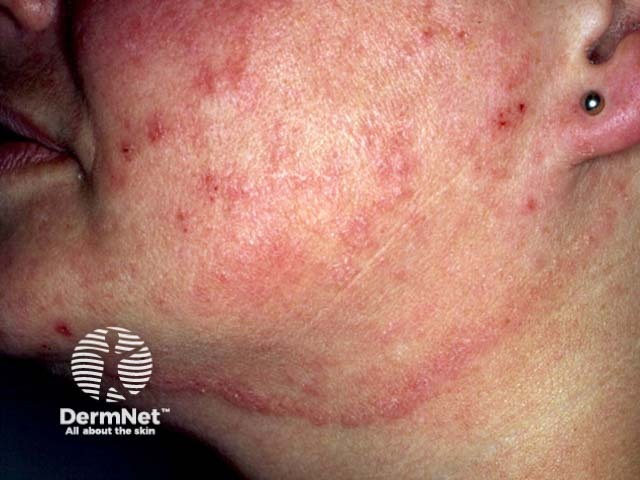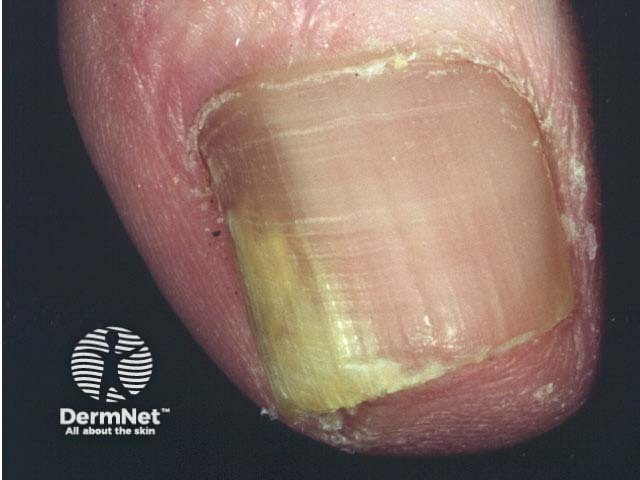Main menu
Common skin conditions

NEWS
Join DermNet PRO
Read more
Quick links
This quiz will test how good you are at diagnosing skin conditions due to fungi, bacteria and viruses.
For each of the ten cases, study the image(s) and then answer the questions. You can click on the image to view a larger version if required.
Each case should take approximately 2 minutes to complete. There is a list of suggested further reading material at the end of the quiz.
When you finish the quiz, you can download a certificate.


What is the diagnosis?
Dermatophyte fungus infection resulting in tinea faciei and tinea unguium.
How can the diagnosis be confirmed?
The diagnosis should be confirmed by mycology.
Scrapings were taken from the erythematous scaly border under her chin and from scratched papules on her cheek. The specimens were sent to the laboratory for potassium hydroxide microscopy and fungal culture. Interim microscopy reports indicated fungal elements were seen. One month later, the laboratory cultured Trichophyton rubrum.
T. rubrum is an anthrophophilic (human) infection. Other more common sites for tinea should be examined, as they are likely to be the source of facial infection. The woman proved to have tinea pedis and extensive tinea unguium, confirmed by microscopy and culture.
As the differential diagnosis included infection with Staphylococcus aureus, blue-top swabs were also taken for microscopy and bacterial culture. A light growth of Staph. aureus was reported from the scratched papules on the woman's cheek. This was considered secondary and was not actively treated.
What treatment should be recommended?
As the toenail was infected, a systemic antifungal agent was recommended, the choices being terbinafine, itraconazole, ketoconazole or fluconazole. Griseofulvin is no longer distributed in New Zealand.
The patient was treated with oral terbinafine 250 mg daily for three months. The rash on her face and feet resolved within two or three weeks, and there was substantial improvement in the appearance of her toenails at six-month follow-up. However, a year later, she noted recurrence of tinea unguium. After an unsuccessful trial of topical ciclopirox lacquer twice weekly for six months, she was again treated with oral terbinafine with good response.
What potential adverse effects of treatment should be considered?
There are several potential adverse effects of topical antifungal therapy.
Inefficacy – Topical antifungal agents are in general less effective than oral agents and recurrence is more likely because of residual untreated disease. This is particularly likely for dermatophyte infection affecting hair and nails.
Irritation – On the whole, topical antifungal medicines are well tolerated. However, occasionally they may sting, burn, itch or result in dermatitis.
Allergy – Contact allergic dermatitis has been reported from antifungal agents. The allergen is more likely to be a preservative or vehicle than the active ingredient.
Drug interactions – Miconazole has been reported to cause derangement of anticoagulation when used in patients on warfarin.
Combined preparations that include topical corticosteroids for their anti-inflammatory effect may cause cutaneous atrophy and tachyphylaxis. They should not be used in the treatment of tinea for more than two weeks.
Potential serious adverse effects from systemic antifungal therapy include:
Oral antifungal agents should not be taken during pregnancy.